
Roots
Consider, if you will, the profound intimacy held within each coiled strand, each springy twist, each flowing wave of textured hair. It is not merely a biological appendage; it is a living archive, a whispered story passed down through generations. Can ancient hair styling truly communicate identity and heritage today? The answer resides in the deep, resonant echoes from the source, from the very biology of our hair and the ancestral wisdom that understood its power long before microscopes revealed its secrets.
For Black and mixed-race communities, hair has always been a marker, a language, a declaration. It has carried codes of status, tribal affiliation, marital standing, and even spiritual devotion. To understand this connection, we must first recognize the fundamental understanding of textured hair, both from an ancient perspective and through the clarifying lens of modern science, always honoring the profound heritage it carries.

Hair Anatomy and Ancestral Knowing
The distinct nature of textured hair, from its elliptical follicle shape to the tight coiling of its keratin chains, sets it apart. While modern science dissects these attributes, revealing vulnerabilities like susceptibility to breakage at the cuticle or the challenge of moisture retention, ancient communities possessed an intuitive, observational understanding. They knew the hair’s tendencies, its requirements for specific care, and its responsiveness to particular ingredients and manipulations.
The very structure that science now quantifies was, for our ancestors, a living testament to resilience, a feature to be respected and adorned. This inherent biological difference was not seen as a deficit, but as a unique canvas for expression and a tangible link to one’s lineage.
Think of the hair shaft itself—a complex arrangement of cuticle, cortex, and medulla. In highly coily hair, the cuticle layers tend to be less tightly packed, creating more opportunities for moisture loss. This scientific insight validates the long-standing ancestral practice of consistent oiling and butter application. Communities across Africa used local resources like shea butter (Vitellaria paradoxa), marula oil (Sclerocarya birrea), and even clarified butter, or ghee , to seal moisture and protect the hair from environmental stressors.
This practical application was not based on laboratory analysis, but on generations of empirical observation, a deep knowledge of the plant kingdom, and a reverence for healthy hair. It is a testament to how traditional knowledge often aligns with contemporary scientific validation.
Ancient hair styling is a living echo, a direct line from our ancestors to our present selves, carrying profound messages of identity and heritage.

Understanding Hair Types Through Time
Modern hair typing systems, such as those categorizing hair into numbers and letters (Type 4C, 3B, etc.), are relatively new inventions, attempting to standardize a diverse reality. Yet, long before these systems, various African cultures had their own nuanced ways of understanding and distinguishing hair textures and their suitable styles. These distinctions were not for mere categorization; they often related to social roles, ceremonial purposes, or geographic identity. The intricate patterns of West African braids, for instance, were often specific to certain ethnic groups, providing a visual marker of identity even from a distance.
Consider how traditional African societies, without scientific charts, understood hair’s capabilities and limitations. They observed its elasticity, its density, and its tendency to shrink, then adapted styling techniques to honor these natural attributes. This is evident in the development of styles that both stretched and protected the hair, minimizing manipulation while allowing for growth. The term “textured hair” itself has come to collectively describe the coils, curls, and waves historically categorized, and often marginalized, by Eurocentric beauty standards.
The heritage of these hair types was often seen as a challenge by colonizers, with attempts made to strip individuals of these visible cultural markers. Reclaiming this language and understanding its depth is part of affirming that heritage.
| Hair Characteristic Moisture Retention |
| Ancestral Understanding (Heritage) Observed hair's tendency to dry; used oils and butters from local plants for sealing. |
| Modern Scientific Understanding Elliptical follicle shape and less compact cuticles lead to faster moisture loss. |
| Hair Characteristic Strength and Breakage |
| Ancestral Understanding (Heritage) Understood need for gentle handling and protective styles; recognized resilience when cared for. |
| Modern Scientific Understanding Variations in disulfide bonds and points of curvature can make hair vulnerable to mechanical stress. |
| Hair Characteristic Texture Pattern |
| Ancestral Understanding (Heritage) Recognized as a natural, diverse attribute; associated with specific ethnic groups and aesthetics. |
| Modern Scientific Understanding Determined by follicle shape, hair bulb curvature, and cellular arrangement. |
| Hair Characteristic Ancient wisdom provided practical solutions, often aligning with later scientific discoveries about textured hair's unique properties. |
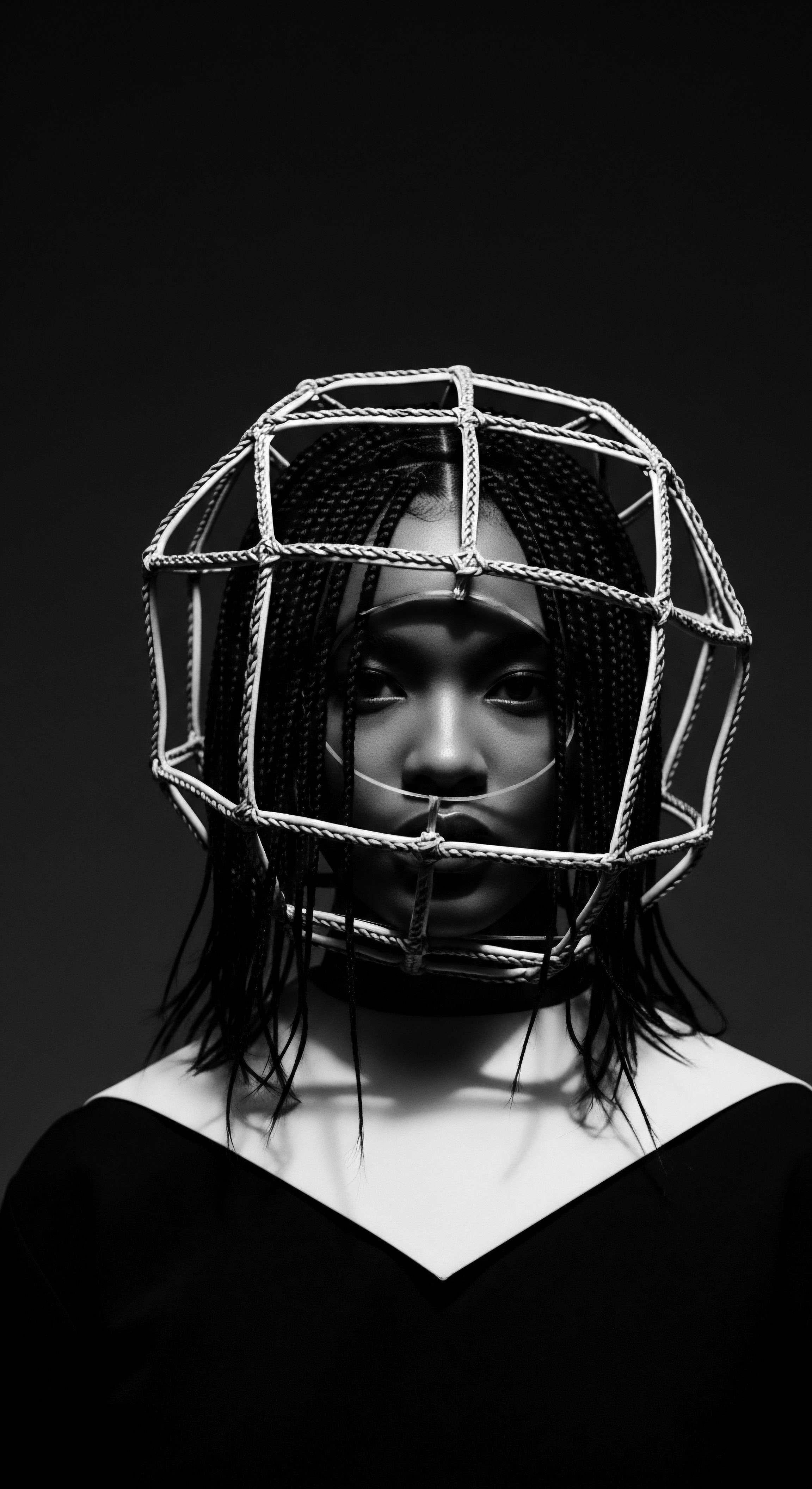
What Can Hair’s Growth Tell Us About Ancient Life?
Hair growth cycles are universal, but the environmental and nutritional factors influencing them have varied significantly across human history. Our ancestors, particularly in diverse African climates, relied on diets rich in plant-based nutrients, fresh produce, and lean proteins, elements known today to support robust hair growth. While they lacked knowledge of amino acids or vitamins, their dietary practices, rooted in their surroundings, likely contributed to hair health. The cyclical nature of hair growth, its shedding and renewal, may have even held symbolic significance in certain cultures, representing continuity or rebirth.
The collective understanding of hair’s elemental biology, passed down through generations, formed the bedrock of ancient hair care practices. It was not merely about aesthetic appeal; it was about acknowledging a living part of the self, deeply connected to one’s lineage and the vitality of the community. This foundational knowledge, born of observation and tradition, still informs the most effective textured hair care regimens today, creating a tangible link to our shared ancestral past.
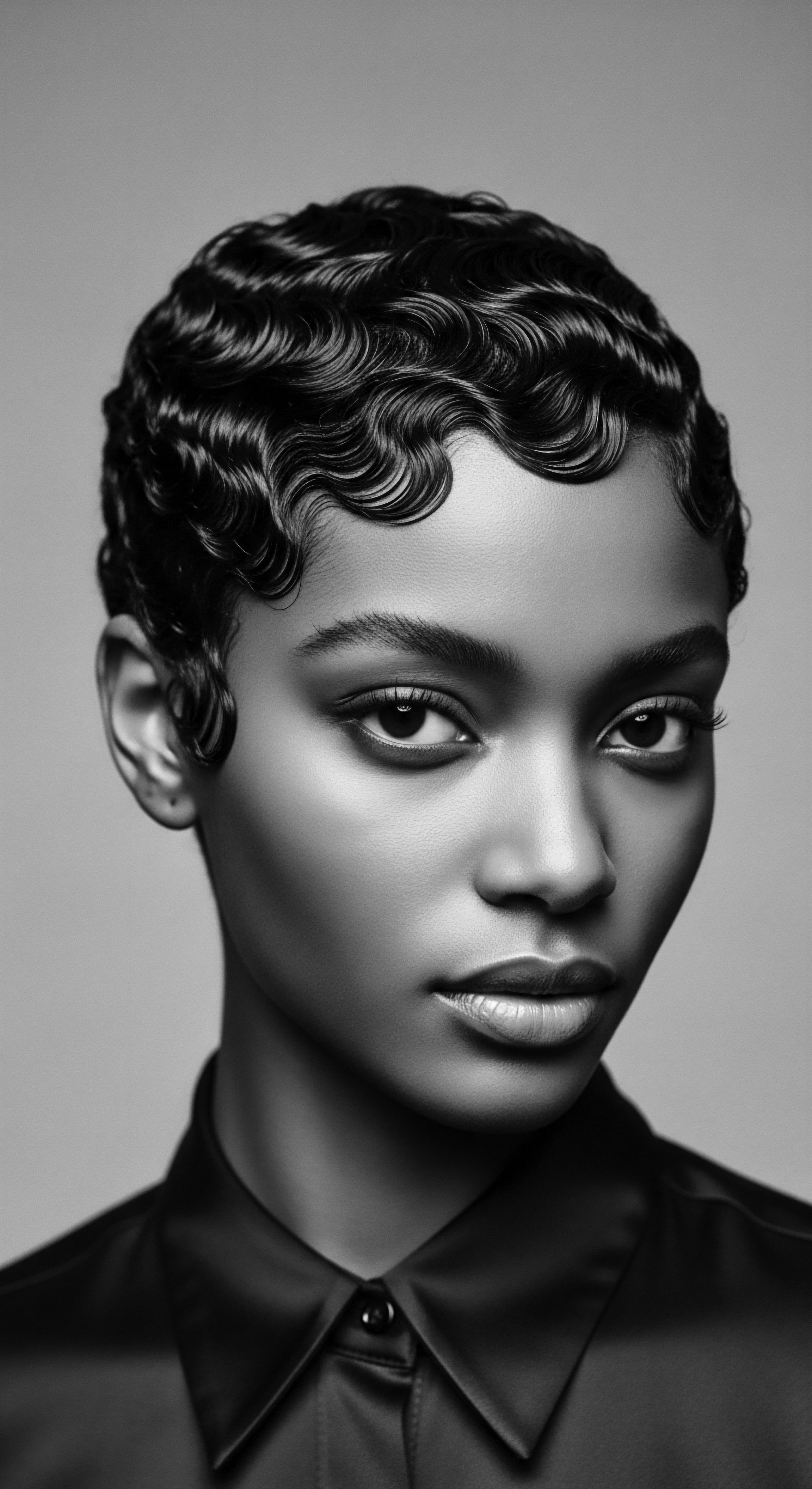
Ritual
From the very roots of our hair’s being, we ascend to its purposeful shaping, a testament to ancient hands and their profound understanding of form and function. Can ancient hair styling truly communicate identity and heritage today? The answer lies in the enduring artistry of traditional techniques, the ingenious tools of our ancestors, and the transformative power these rituals held, and continue to hold, for textured hair. Hair styling was never a trivial act in ancient societies; it was a deeply communal, ceremonial, and communicative practice, steeped in cultural heritage.
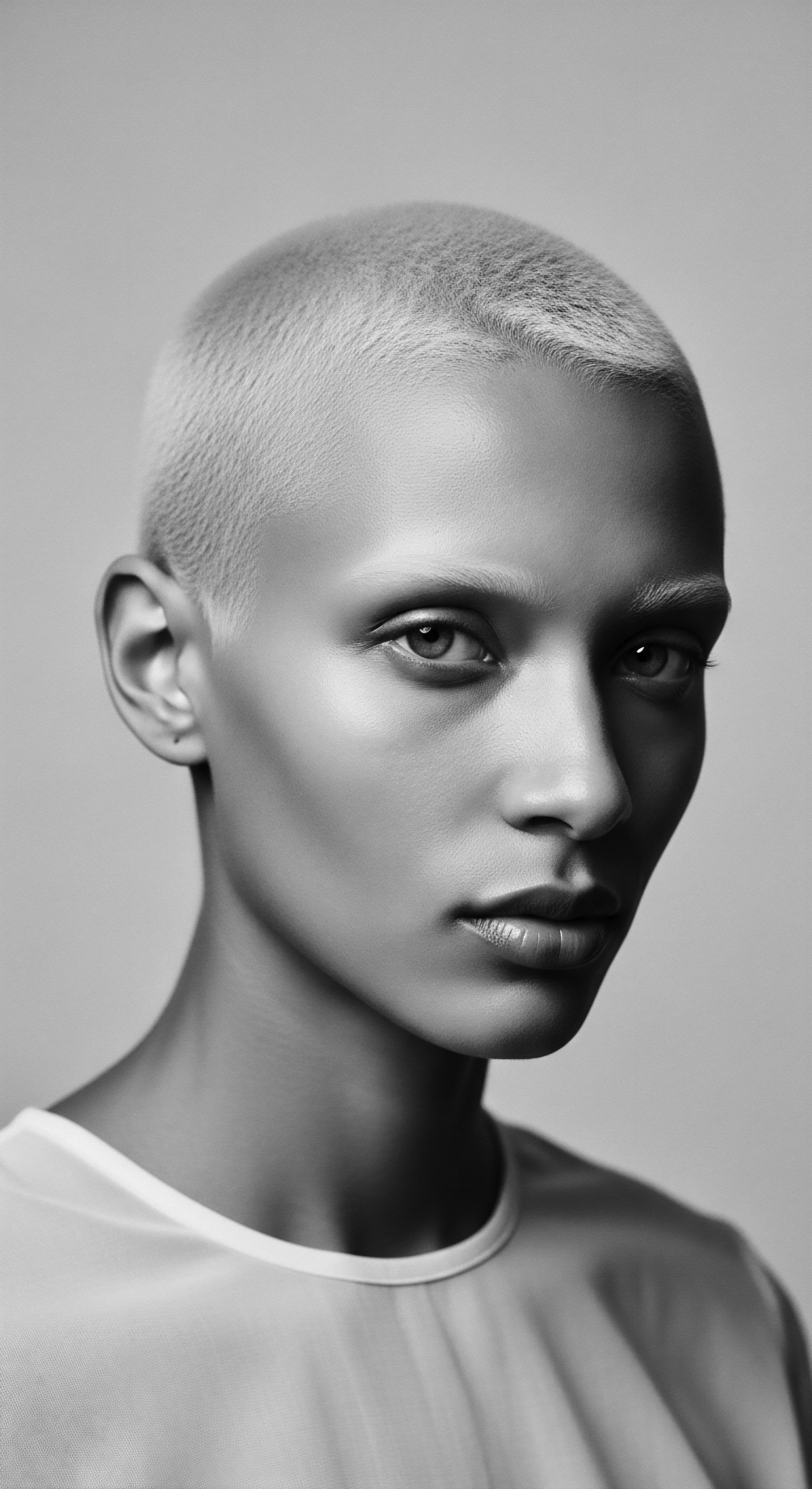
Protective Styles as Living Traditions
The myriad of protective styles seen today—braids, twists, locs—are not modern inventions. They are direct descendants of ancient practices, carrying a lineage of protection, social coding, and artistry. Across the African continent, these styles served as intricate canvases for conveying status, age, marital eligibility, wealth, and spiritual beliefs. The very act of creating these styles often involved communal gatherings, reinforcing social bonds and transmitting cultural knowledge from elder to youth.
Consider the remarkable Mbalantu women of Namibia , whose traditional long plaits, known as eembuvi, extend dramatically, sometimes reaching their ankles. These impressive lengths are achieved through a meticulous, lifelong process involving sinew extensions and a mixture of ground tree bark, oils, and butterfat, applied over years. This styling is more than aesthetic; it is a profound marker of identity, representing different stages of a woman’s life, from girlhood through marriage and motherhood.
The length and adornment of these eembuvi convey a woman’s social standing and her journey. This practice is a powerful case study in how ancient hair styling operates as a living, breathing communication system, a testament to enduring cultural heritage, passed from mother to daughter across generations, embodying a unique form of identity.
The detailed patterns of cornrows , for instance, often served as maps for escape during slavery, carrying seeds for sustenance along the perilous journeys. Beyond survival, they conveyed agricultural motifs, social order, and a civilized way of life within various African communities. Each braid, each line, told a story, a silent language understood by those who shared the cultural code. This rich history demonstrates how protective styles are not merely about aesthetics or hair health; they are profound vessels of historical memory and communal resilience.
Traditional protective styles:
- Braids ❉ Varying from tight cornrows close to the scalp to individual box braids and intricate Fulani designs, each with historical significance.
- Twists ❉ Two-strand twists, flat twists, and Senegalese twists, offering versatile protective options with ancient roots.
- Locs ❉ Dreadlocks, a deeply spiritual and communal style in many African and diasporic traditions, symbolizing connection and wisdom.

Tools of the Past, Wisdom for the Present
The effectiveness of ancient styling practices was intrinsically linked to the tools employed. Far from today’s mass-produced plastic implements, ancestral tools were crafted from natural materials ❉ wood, bone, ivory, and sometimes even iron. These combs, picks, and hairpins were often works of art themselves, carved with symbols or imbued with spiritual significance. Their designs reflected an intuitive understanding of textured hair’s needs—wider teeth for detangling, smooth finishes to prevent snagging.
These tools, much like the hands that wielded them, were extensions of a holistic hair care philosophy. They were used gently, often with the aid of natural oils and water, prioritizing the integrity of the hair shaft. This contrasts sharply with some modern approaches that prioritize speed or extreme alteration, often at the expense of hair health. The preservation of these ancestral tools, whether in museums or through continued use in some communities, stands as a tangible link to the heritage of textured hair care.
Styling textured hair was, and remains, an intimate dialogue between skill, tradition, and the inherent properties of the hair itself, a language spoken across generations.
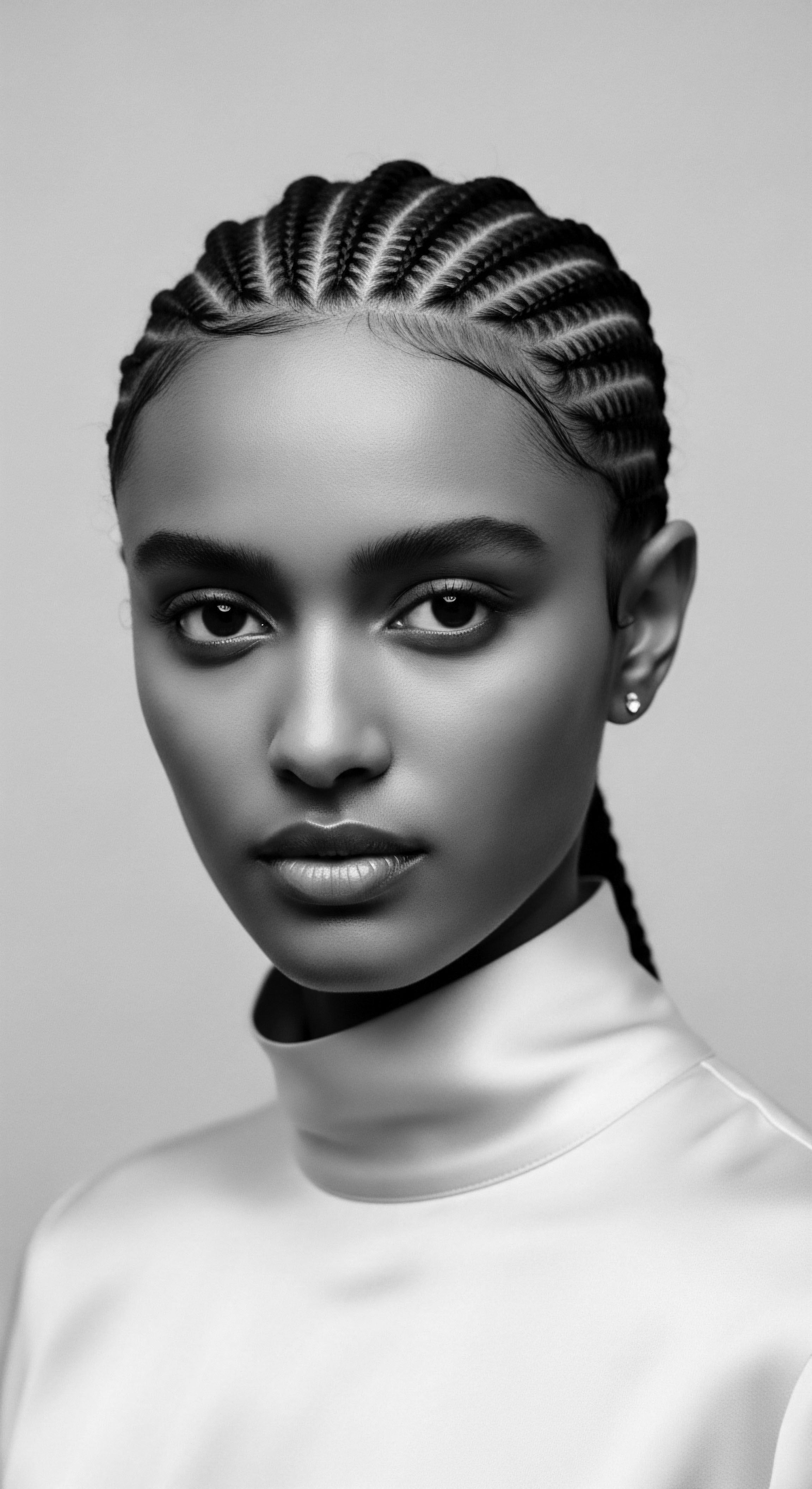
Transformations ❉ Beyond the Physical
Ancient hair styling was a transformative art, not just for the hair itself, but for the individual and the community. Styles often marked rites of passage ❉ a child’s first haircut, an adolescent girl’s initiation into womanhood, a marriage, or a period of mourning. These transformations were publicly recognized, signaling changes in social standing and responsibility. The elaborate hairstyles of ancient Egyptian nobility, for instance, were meticulously maintained not just for beauty but as symbols of divine connection and social order.
The use of wigs and extensions also holds a deep history beyond modern fashion trends. In ancient Egypt, elaborate wigs provided protection from the sun, enhanced status, and were integral to ceremonial dress. These were often crafted from human hair, wool, or vegetable fibers, sometimes adorned with precious metals and stones.
Similarly, in various African cultures, hair extensions were used to signify wealth or status, as exemplified by the Mbalantu women’s use of sinew extensions. This historical context broadens our understanding of these practices, grounding them in rich cultural narratives rather than fleeting trends.
| Aspect Purpose |
| Ancient Styling Heritage Social communication, spiritual connection, protection, cultural identity. |
| Modern Styling Practice Aesthetics, fashion, protection, self-expression, convenience. |
| Aspect Tools |
| Ancient Styling Heritage Hand-carved wood, bone, ivory combs; natural fibers. |
| Modern Styling Practice Plastic combs, metal implements, heat tools (flat irons, curling wands). |
| Aspect Application |
| Ancient Styling Heritage Often communal, ritualistic; long, gentle processes with natural ingredients. |
| Modern Styling Practice Often individualistic; can be fast-paced, sometimes involves chemical processing or high heat. |
| Aspect While modern practices introduce new technologies, the core purposes of expression and protection often echo ancestral motivations. |
Understanding the ceremonial and communicative aspects of ancient hair styling allows us to view contemporary practices with renewed reverence. When a woman chooses to wear her hair in intricate braids or coils today, she may unknowingly, or consciously, be channeling the legacy of a thousand generations, making a statement that transcends personal preference and speaks to a collective heritage. The echo of these ancient rituals continues to shape identity and belonging in the modern world.
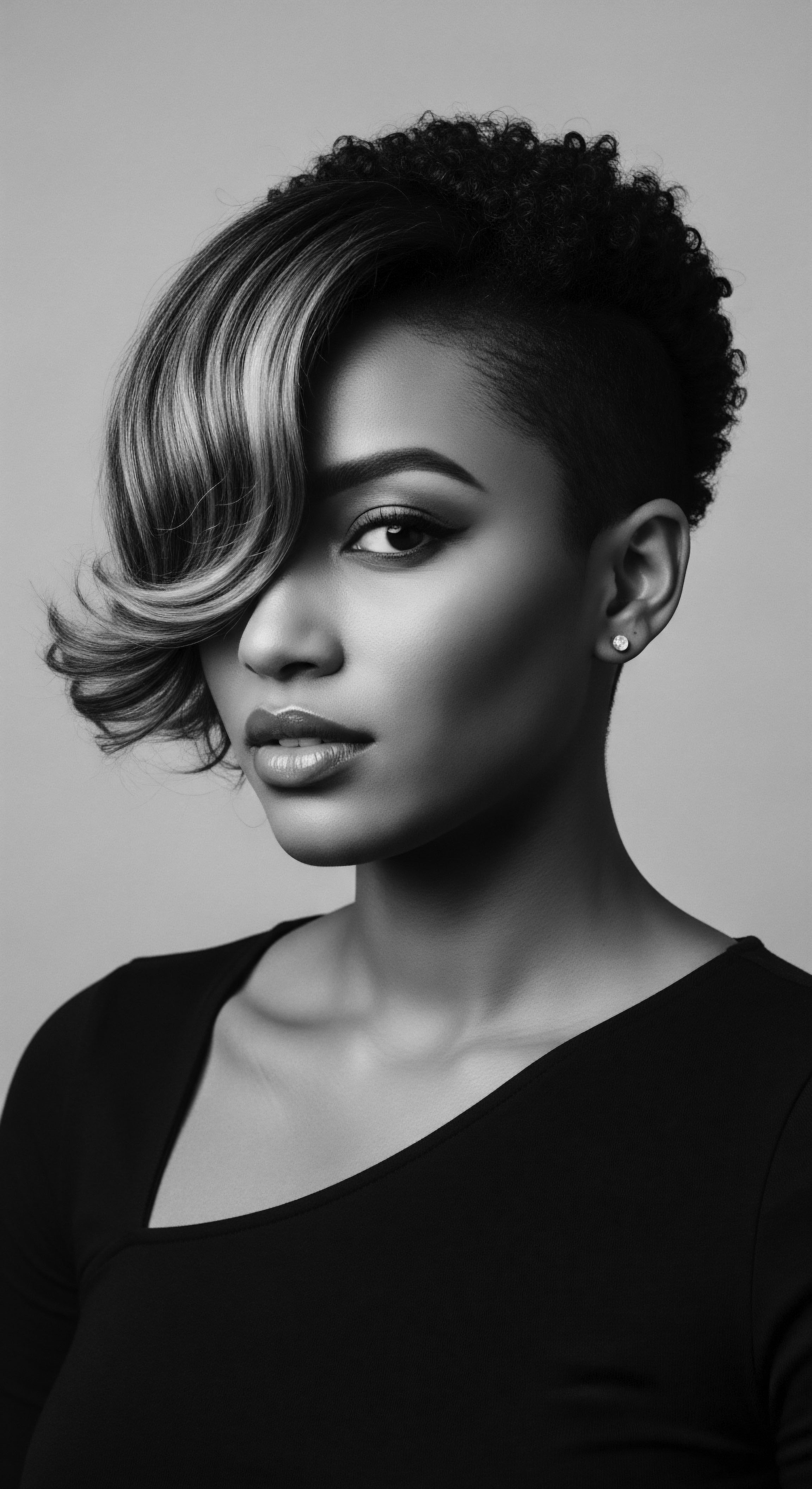
Relay
If hair’s roots whisper of its intrinsic being, and its ritualistic shaping sings of communal identity, then its daily care and enduring resilience represent a relay race across time, where ancestral wisdom passes the baton to modern science. Can ancient hair styling truly communicate identity and heritage today? This question finds its deepest resonance in the ongoing regimen of care, the nightly rituals, and the solutions for challenges that mirror the wisdom of generations, all filtered through the unique lens of textured hair heritage.
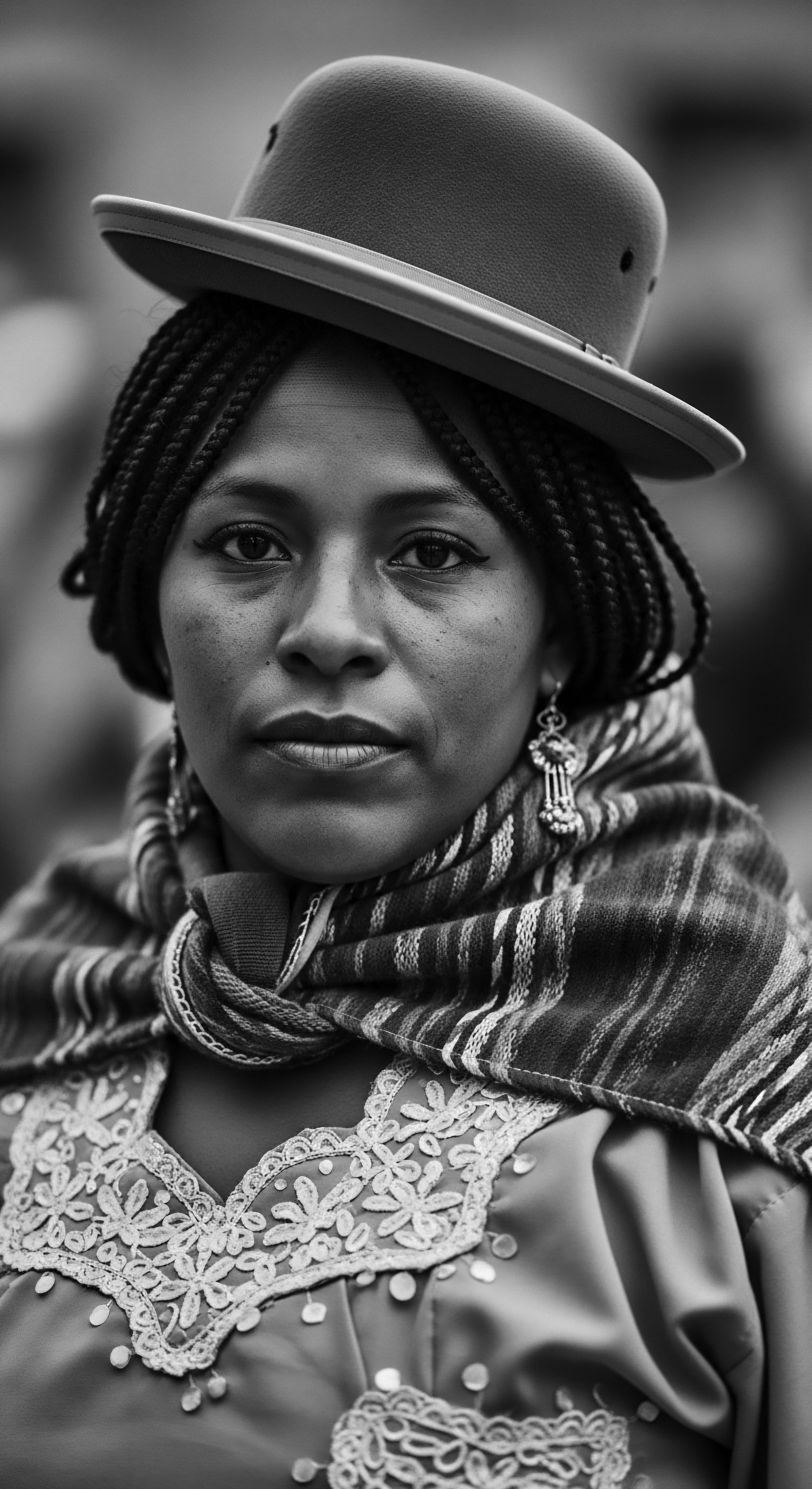
Building Personal Regimens Through Inherited Wisdom
The concept of a personalized hair care regimen is not new. Our ancestors, living in intimate connection with their environment, developed sophisticated systems of care based on observation, seasonal changes, and individual hair needs. They understood that hair health was inextricably linked to overall wellbeing, recognizing the influences of diet, water quality, and even spiritual harmony. This holistic perspective, often absent in reductionist modern approaches, offers profound guidance for building truly effective textured hair care.
For centuries, African communities used natural emollients and cleansers. Rhassoul clay from Morocco, for instance, has been a staple for purifying and conditioning both skin and hair, drawing out impurities without stripping natural oils. This traditional ingredient offers a gentle, effective cleansing solution that aligns with modern understanding of sulfate-free hair care.
Similarly, the widespread use of natural butters like shea butter across West Africa is not merely anecdotal; scientific study has shown its rich content of fatty acids and vitamins provides significant moisturizing and protective benefits, confirming what generations intuitively knew. This continuity of practice, rooted in the heritage of natural ingredients, allows for a deep, intuitive understanding of hair’s true requirements.
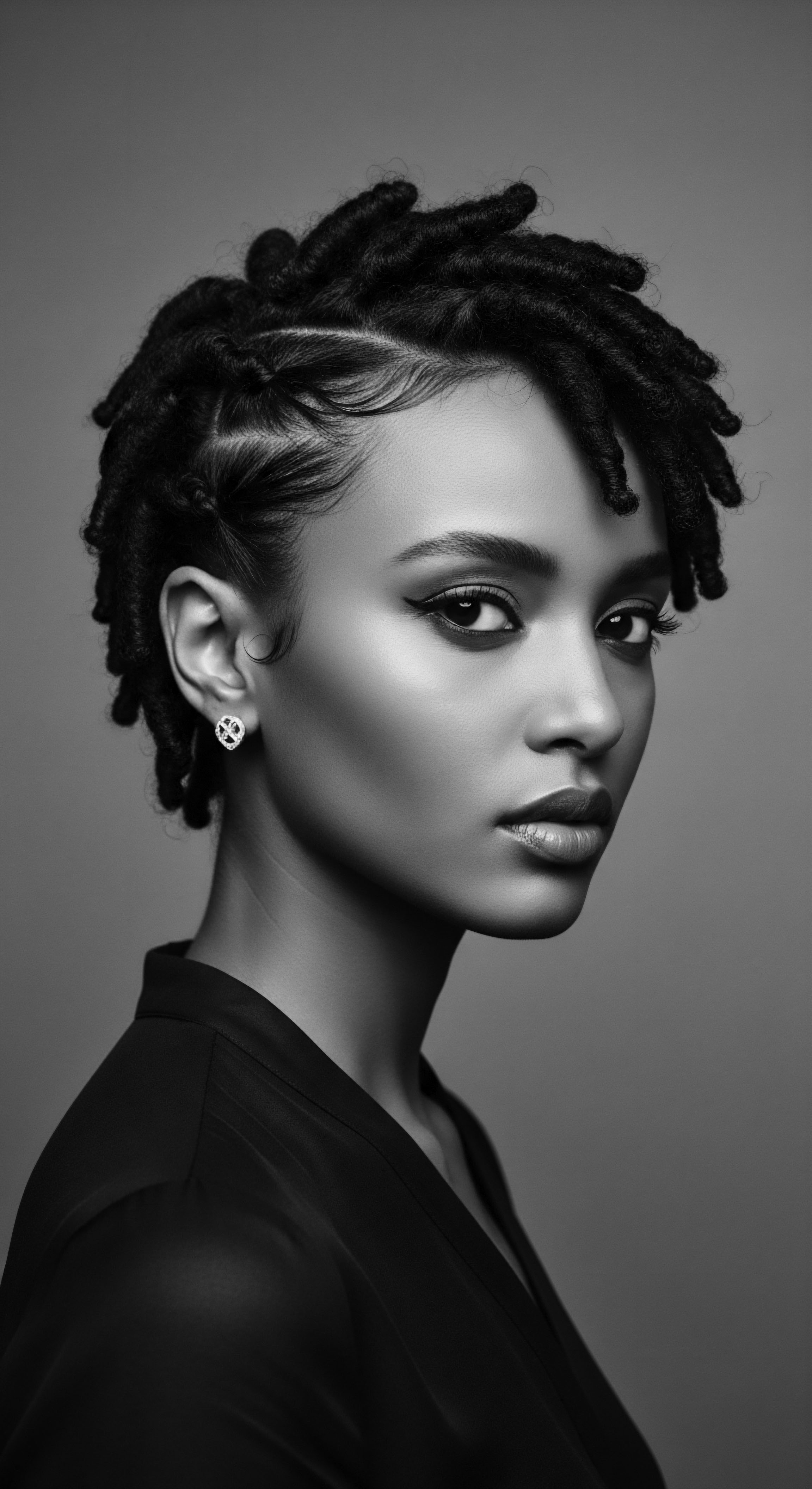
The Nighttime Sanctuary and Bonnet Wisdom
The ritual of preparing hair for rest is a testament to ancient wisdom. Before the advent of silk bonnets and satin pillowcases, various methods were employed to protect hair during sleep. Wrapping hair in soft cloths or natural fibers, or sleeping on animal skins that provided a smoother surface, were common practices across many cultures to preserve elaborate styles, prevent tangling, and maintain moisture. This historical lineage highlights a timeless understanding ❉ textured hair, with its inherent tendency towards dryness and tangles, requires deliberate protection.
The modern bonnet , often a simple silken cap, serves as a direct descendant of these ancient practices. It acts as a protective cocoon, minimizing friction against abrasive pillowcases that can lift the cuticle, leading to breakage and frizz. This seemingly simple accessory carries a profound heritage, representing generations of Black women’s ingenuity and commitment to hair health. It is a symbol of self-preservation, a practical application of ancestral knowledge adapted for contemporary life.
Essential nighttime care for textured hair:
- Wrapping ❉ Using silk or satin scarves to cover and protect styles, minimizing friction.
- Pineappling ❉ Gathering hair loosely at the top of the head to preserve curl patterns and reduce flattening.
- Moisture Sealing ❉ Applying a light oil or cream to ends before bed to combat dryness overnight.

Ingredient Wisdom ❉ Ancient Remedies, Modern Affirmation
The vast pharmacopeia of traditional African hair care ingredients offers a powerful dialogue between heritage and science. Many botanicals used for centuries possess properties that modern research now elucidates.
| Traditional Ingredient (Heritage) Chebe Powder (Chad) |
| Ancestral Use/Observation Used to coat hair, promote length retention, and reduce breakage. |
| Modern Scientific Benefit Polysaccharides and saponins strengthen hair shaft, improve elasticity, and seal in moisture. |
| Traditional Ingredient (Heritage) African Black Soap (West Africa) |
| Ancestral Use/Observation Natural cleanser made from plantain skins, cocoa pods, shea butter, and palm kernel oil. |
| Modern Scientific Benefit Gentle cleansing properties; rich in antioxidants and skin-loving ingredients. |
| Traditional Ingredient (Heritage) Rooibos Tea (South Africa) |
| Ancestral Use/Observation Consumed for health benefits; observed to support overall vitality. |
| Modern Scientific Benefit Contains antioxidants and anti-inflammatory compounds that may support scalp health and hair growth. |
| Traditional Ingredient (Heritage) The enduring legacy of these ingredients demonstrates the remarkable effectiveness of ancestral botanical knowledge. |
The use of Chebe powder by the Basara Arab women of Chad is a compelling example. For generations, they have applied a mixture of ground herbs and seeds to their hair, not for direct growth, but for length retention by preventing breakage and sealing in moisture. This traditional practice, observed to result in remarkably long, strong hair, is now gaining global recognition, showcasing how ancient remedies address the unique challenges of textured hair. This is not just a historical curiosity; it is a vital, living tradition that speaks to a deeper understanding of hair health.

Holistic Influences and Shared Heritage
Beyond products and techniques, ancient communities understood hair health as part of a larger, holistic system. Stress, diet, community support, and spiritual practices all played a part. Hair was often seen as a conduit for spiritual energy, a physical manifestation of one’s connection to ancestors and the divine. This perspective instilled a deep reverence for hair, encouraging gentle, intentional care rather than harsh manipulation.
The enduring significance of ancient hair styling, therefore, lies in its capacity to communicate heritage not just through visible styles, but through the underlying philosophies of care, communal practice, and holistic wellbeing. It is a continuous relay, where the insights of the past inform the present, shaping our understanding of identity and belonging in a profound and interconnected way. The very act of caring for textured hair today, whether through specific styles or nurturing rituals, becomes a participation in this timeless relay, honoring a heritage that continues to resonate with vitality.

Relay
The journey through hair’s elemental biology and its ceremonial sculpting now leads us to the heart of its enduring significance—its role in voicing identity and shaping futures. Can ancient hair styling truly communicate identity and heritage today? The answer is an unequivocal yes, expressed through a continuous relay of knowledge, resilience, and creative expression that connects the deeply rooted past to the unfolding present. This connection extends beyond mere aesthetics; it delves into the intricate interplay of social narrative, scientific validation, and the ongoing reclamation of ancestral pride.

Hair as a Social and Political Statement
In many ancient African societies, hair was a sophisticated form of communication, a visual language denoting everything from marital status to social hierarchy, religious belief, and even a person’s life journey. These styles were not static; they evolved with the individual and the community, serving as dynamic identity markers. When a woman wore a certain arrangement of braids, for example, it could signal her readiness for marriage, her status as a new mother, or even her clan affiliation. This profound semiotic system meant that hair was always inherently social and, by extension, political.
The transatlantic slave trade sought to dismantle this system, forcefully stripping enslaved Africans of their cultural hairstyles, a deliberate act of dehumanization aimed at erasing their identity and heritage. Yet, even in the face of such oppression, resilience found expression. Enslaved people ingeniously adapted traditional cornrow patterns to hide seeds for planting or to depict escape routes, transforming hair into a covert means of survival and resistance.
This historical context illustrates how hair, even when suppressed, continued to communicate profound messages of identity, defiance, and a tenacious hold on heritage. The very act of maintaining these styles, however rudimentary, was an act of preserving a fragment of self.
This historical struggle echoes into contemporary times. The “Black is Beautiful” movement of the 1960s and the subsequent natural hair movement of the 21st century represent conscious reclamations of ancestral styles and textures that were once deemed “unprofessional” or “undesirable” by Eurocentric standards. These movements are direct descendants of ancient practices, embodying a continuation of the tradition where hair functions as a powerful declaration of self, identity, and shared heritage.
For instance, a 2023 research study found that 41% of Black women reported altering their hair from curly to straight for job interviews, with 54% believing straight hair was a requirement for such occasions. This statistic underscores the enduring societal pressures, yet it also highlights the profound act of resistance and identity affirmation in choosing to wear natural, textured styles today.
The historical journey of textured hair, from ancient communal markers to modern personal declarations, reveals its consistent role as a powerful communicator of identity and heritage.

The Interplay of Science and Cultural Validation
Modern science, in its ongoing exploration of hair biology, often provides validation for long-standing cultural practices. For example, the scientific understanding of hygral fatigue —the damage caused by repeated swelling and shrinking of the hair shaft when exposed to water—provides a rationale for ancestral practices of using oils and butters to seal moisture, minimizing the hair’s interaction with ambient humidity. This scientific explanation does not diminish the ancestral wisdom; it provides a deeper appreciation for its empirical accuracy.
Similarly, the unique coiling patterns of textured hair mean that natural oils produced by the scalp struggle to travel down the hair shaft, leaving the ends prone to dryness. This scientific fact explains why ancient cultures, particularly those in dry climates, placed such emphasis on applying external emollients. The practical success of these historical methods, affirmed by scientific principles, demonstrates a powerful continuity between what was known through observation and what is now understood through microscopic analysis. This bridge between traditional knowledge and contemporary science strengthens the authority of heritage practices, confirming their effectiveness and relevance.

Shaping Futures Through Ancestral Hair Narratives
The communication of identity and heritage through ancient hair styling is not simply a historical curiosity; it is a dynamic force shaping the future. As individuals and communities worldwide continue to rediscover and reclaim ancestral hair practices, they contribute to a living, evolving narrative. This reclamation fosters self-acceptance, promotes positive self-image within Black and mixed-race communities, and challenges narrow beauty standards that have historically excluded textured hair.
When a young person today learns about the intricate braiding techniques of their ancestors, or the spiritual significance of locs in a particular tradition, they are not just learning a hairstyle. They are inheriting a legacy, understanding their place within a rich lineage of resilience, creativity, and cultural pride. This knowledge builds a robust sense of identity, connecting them to generations that navigated, survived, and thrived through the expressive power of their hair. The conversations surrounding textured hair today, whether in online communities or family gatherings, are extensions of this ancient dialogue, ensuring that the wisdom and symbolism of the past continue to guide and inspire future generations.
The enduring impact of ancient hair practices:
- Cultural Continuity ❉ Preserving techniques and meanings across generations, ensuring the survival of unique cultural expressions.
- Identity Affirmation ❉ Providing tangible connections to ancestral roots, strengthening personal and communal identity.
- Beauty Standard Redefinition ❉ Challenging dominant beauty norms by celebrating the inherent beauty of textured hair in all its forms.
The profound language of ancient hair styling continues to speak today, articulating a powerful message of identity and heritage. It speaks of survival, of ingenuity, of artistry, and of the enduring spirit of communities who understood that a strand of hair holds a universe of meaning.

Reflection
We have journeyed through the elemental composition of a single strand, traced the ceremonial hands that shaped it, and witnessed its enduring power to communicate across time. The question, then, can ancient hair styling truly communicate identity and heritage today, finds its profound answer not in a simple ‘yes’ or ‘no’, but in the living, breathing reality of textured hair itself. It is a vibrant echo, a continuous thread woven from the very first breath of ancestral wisdom to the contemporary expression of self.
The ‘Soul of a Strand’ ethos reminds us that hair is not inert; it carries memory, resilience, and the indelible marks of history. Every coil, every curl, every wave holds within it the story of a people, a testament to ingenuity, adaptation, and unwavering spirit. When we choose a style rooted in ancient practices—whether the protective embrace of braids, the spiritual declaration of locs, or the nurturing ritual of ancestral oils—we are not merely adorning ourselves. We are engaging in a sacred dialogue with those who came before us, honoring their knowledge, and reaffirming our place in a grand, unfolding narrative of heritage.
This is more than cultural preservation; it is cultural continuation. It is the understanding that the care bestowed upon textured hair, the styles chosen, and the traditions upheld, are potent acts of identity, a visible and tactile lineage. The wisdom encoded in ancient styling techniques, once passed down through oral tradition and hands-on teaching, now finds new avenues of transmission, ensuring that the legacy of textured hair remains a luminous archive, perpetually open, perpetually inspiring. In every strand, in every style, the past breathes life into the present, allowing heritage to truly communicate, to live, and to inspire unending possibility.
References
- Byrd, Ayana D. and Lori L. Tharps. (2014). Hair Story ❉ Untangling the Roots of Black Hair in America. St. Martin’s Press.
- Dabiri, Emma. (2020). Twisted ❉ The Tangled History of Black Hair Culture. Harper Perennial.
- Jenkins, Nicole D. (2020). Ujima Natural Hair and the Black Community. University of South Florida.
- Lashley, Myrna. (2015). The Importance of Hair in the Identity of Black People. McGill University.
- Mbilishaka, Afia. (2020). The Emotional Impact of Hair Shaming on Black Women. Howard University.
- Rosado, Craig. (2003). Nappy Hair in the Diaspora ❉ Exploring the Cultural Politics of Black Hair. University of Florida.
- Sieber, Roy, and Frank Herreman. (2000). Hair in African Art and Culture. Museum for African Art.
- Spindel, Carol. (1989). Kpeenbele Senufo Potters. African Arts.
- Tshiki, Nonkoliso Andiswa. (2021). African Hairstyles – The “Dreaded” Colonial Legacy. The Gale Review.
- Weitz, Rose. (2001). Women and Their Hair ❉ Seeking Power through Resistance and Accommodation. Gender and Society.
